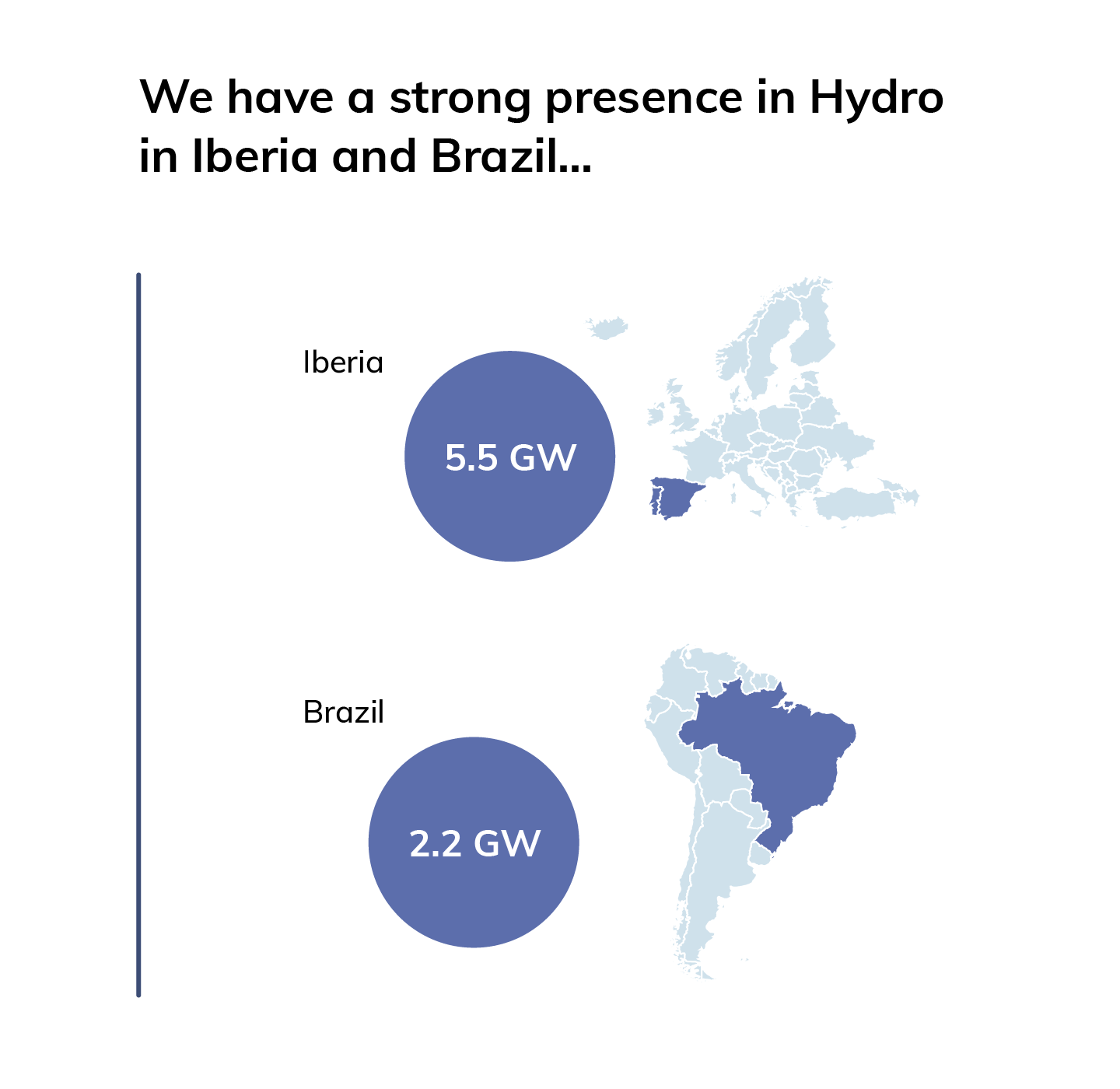Renewables are increasingly the answer to decarbonisation. Electrification, combined with technologies such as hybridization, integration and, of course, hydrogen are keywords to achieve carbon neutrality.
The European Union is committed to assuming carbon neutrality by 2050, thus contributing to the global and European goals assumed in the Paris Agreement. Each member state presented its strategy to meet these targets and Portugal was no exception, with an ambitious energy policy and a long way to go. EDP went even further: it committed to being 100% green by 2030, taking the lead in the energy transition.
Energetic transition that is already underway, but now it is time to accelerate it. This is perhaps the greatest challenge European countries have ever taken on, a common goal with the rest of the world, which delivers, in the light of this Paris Agreement, the survival of the planet, at least as we know it. Decarbonising is necessary, but also very challenging. The energy sector can be one of the keys to achieving these goals. But how?
Electrification is a way
The environmental strategy depends a lot on the energy sector at the moment, mainly the electricity sector. “The same sector that, very recently, was highly penalized from a reputational point of view, because it was effectively responsible for greenhouse gas emissions, but without a great transitional alternative”, highlights Sara Goulart, responsible for the Environment and Climate areas at EDP's Sustainability department, in an interview about climate change, that can be seen here. “And it is very interesting to see that today it is a sector that, suddenly, is capable of being a solution, not only for us, domestic consumers, but for many other sectors that were unable to decarbonize, that had not yet found a way to do so”. Examples of these sectors are transportation, buildings, the commercial sector – which can all be decarbonised – and a significant part of industry.” All this, due to the important role, always growing, that renewable energies have played.
Some renewable energy sources are already cheaper than fossil fuels. In the immediate future, it is then necessary to exponentially increase solar, wind and other sources of clean energy, minimizing the use of fossil fuels in this energy transition. But this requires more legislative action, incentive programs for electrification projects, and also more regulation, in order to eliminate fossil fuels from this equation.
In the immediate future, changes could start in the transportation sector, with the spread of electric vehicles. Also in the buildings and industry sectors, the use of photovoltaic panels, heat pumps, and electric heating systems are assertive steps towards electrification, sectors that Sara Goulart mentioned as the most susceptible to an immediate decarbonization.
All in all, according to the report Sector Coupling in Europe: Powering Decarbonization, the electrification of these three sectors can reduce carbon dioxide (CO2) emissions by up to 60% between 2020 and 2050. This revolution can happen with one more extremely important addition, the much talked about green hydrogen (link to hydrogen article), produced by electrolysis using renewable energies. Recognizing today that electrification alone cannot meet all existing consumption, it will be necessary to integrate hydrogen into this strategy. In fact, hydrogen can play a key role in the decarbonization of many sectors. As João Nicolau, Hydrogen projects head of EDP, says, "H2 and electricity, rather than being direct competitors, will tend to be complementary in the future, due to their distinct characteristics and applications”.
Offshore wind on the agenda
Investment in renewable energy in recent years has allowed the energy sector to look for more efficient, cheaper and more reliable solutions. And wind energy was the one that grew the most, not only quantitatively, but also qualitatively. In addition to reaching 370 GW of accumulated world production in the last two decades, wind power is now much more technological. It knew how to follow the evolution of technology to produce more and at a lower cost, but also in a more efficient and sustainable way.
The production of electricity from the power of the wind grew not only on land, but also developed in the sea (offshore), where it has had an exponential growth in the energy sector: about 30% per year in the last decade. The costs allocated to this form of energy, as well as to all renewables in general, have also dropped drastically, placing them on a more competitive and accessible level.

Thus, while wind farms continue to be installed on land, the technology that allows them to be installed at sea is increasingly developing. Why and what advantages does it bring? “The first benefit is that at sea you can have much larger units, while on land there is a very important limitation: the size of the blades, with conditioned access for heavy vehicles to the installation site. On land we talk about turbines with a maximum power of 4-5 MW. While for offshore, there are already 12 MW turbines and plans for 15 MW turbines”, begins by explaining Miguel Marques, NEW's business development leader.
At the same time, the wind at sea is more stable, because there is no noise from proximity to its passage. Wind deteriorates as it passes buildings, trees and other obstacles, disturbances that do not exist at sea. “In total, when you do the math, offshore wind energy continues to be more expensive, because at sea everything is more expensive, be it maritime resources, maintenance - which requires the creation of new technologies to be done remotely, through robotic solutions - , but in terms of cost-effectiveness, offshore is starting to become more and more interesting when compared to onshore wind”, assumes the EDP NEW specialist.
This is a technology present, above all, in the North Sea, whose coastal area makes it possible to install wind turbines on the seabed, because the water depth does not exceed 40 meters. On the Atlantic coast, the depth is in the order of hundreds of meters, which does not allow investment in this form of wind power. In order to overcome this difficulty, the company opted for floating wind power. WindFloat was the innovative way found by EDP to allow the exploitation of wind potential at sea, at depths (much) greater than 40 meters. Through a floating platform that supports multi-MW wind turbines in marine applications, WindFloat is already a success story, being found in specific geographies, such as Portugal, but also on the east coast of the United States or in Asian markets of Japan and Korea. “By refocusing the technology here, what we are now looking for are interesting innovative solutions for floating offshore wind so that we can demonstrate that they are possible solutions for the future”, continues Miguel Marques.
Hybridization: another of the current trends
In the energy transition and in the role that renewable energies play in achieving carbon neutrality, it is in diversity that we find the balance for the most viable and efficient solutions. The term hybridize, which seeks this same diversity in the energy sector, has never made so much sense as it does today, in the complementarity of various sources of renewable energy, especially solar and wind. That is, if on a sunny and less windy day we make the most of the photovoltaic panels, the same does not happen on a rainy, windy or very cloudy day: on a day like this, we can already make the most of the wind power.
It is in this sum, solar+wind, that we find the result of hybridization. But there are other renewables that can be combined, such as hydro+wind, for example, as long as the total instantaneous power delivered to the electricity grid is maximized. According to the climatic conditions and the possibilities of a region, it is possible to install and combine the best renewables to obtain the best performance.
This is the concept of photovoltaic panels at sea - in controlled seas of water, such as lakes and reservoirs and not in open seas, subject to ocean weather -, which resulted in the new floating photovoltaic plant in Alto Rabagão or Alqueva. “This will be a system with several different generation technologies, in which the main challenge is to operate them together and hybridize them”, highlights Miguel Marques. In other words, it is a system that provides for the combination of energy from several renewable sources with electricity from conventional plants.
But how? Through the integration of solar panels into the ecosystem of the Alqueva hydroelectric plant, to which an electrochemical storage unit is added. The idea is that this system operates as if it were a single plant, maximizing production. “All these units are decarbonized and here the objective is to optimize resources, making the most of the production generated by the photovoltaic panels, storing it if necessary, and also using the water that is in the reservoir to turbine the plant in the best way” , says the EDP NEW specialist. In other words, what to do and how to explore the complementarities in wind power - in which the wind speed is higher at night, while photovoltaic solar only produces during the day -, “is a work that EDP has been exploring”, reinforces Miguel Marques.
In plants equipped with reversible machines, it is still possible to use excess energy through nonsense. In other words, the energy that is not used by consumers is used to move the turbines in the opposite direction and thus refills the reservoirs with water, which will be stored until there is a new increase in electrical consumption. In the Iberian Peninsula, EDP already uses this resource in more than 40% of the dams.

EDP and renewables
In this field, Portugal is even one of the countries that manages to take advantage, since it has a palette of renewable energies that others do not have and, with that, it can accelerate the electrification of the economy. But there are other geographies well positioned to achieve this end. Brazil, where EDPR has been operating since 2009, is also preparing to build eight more wind and solar complexes by 2023, already counting on a very high percentage of renewable energies, in which hydropower stands out. The United States, a market that EDPR began exploring in 2007, is the main market in terms of installed capacity and wind production, in line with Joe Biden's new commitment. Moreover, throughout Europe where EDPR is present, such as Spain, France, Belgium, Greece, Hungary, Italy, Poland, Romania or the United Kingdom, it has made remarkable progress in terms of of renewables. It should also be noted that European countries are best positioned to achieve the goal of carbon neutrality, occupying the top places in the ranking of least polluting countries.

